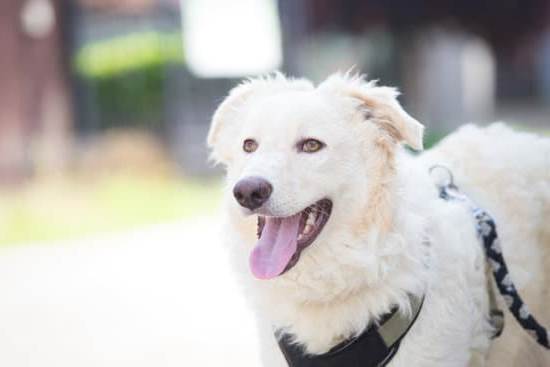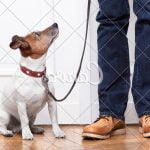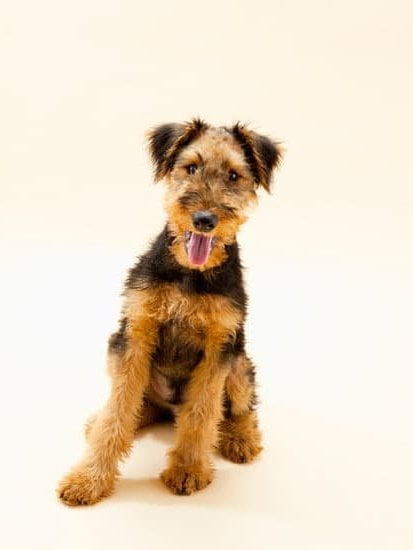Are you wondering how to train your dog to use the bathroom outside? Potty training is an essential part of raising a well-behaved and happy canine companion. In this article, we will provide you with a comprehensive guide on understanding the importance of potty training for dogs and how to effectively train your furry friend to do their business outside.
Potty training is not only about keeping your home clean and odor-free, but it also helps in establishing a strong bond between you and your dog. It teaches discipline and good habits, promoting a healthy environment for both you and your pet.
Setting a potty training schedule for your dog is an important step in the process. By establishing routine bathroom breaks, you can help your dog understand when and where they should go potty. Additionally, choosing the right spot outside for your dog’s bathroom is crucial in reinforcing good habits.
Using positive reinforcement techniques, consistency, patience, and effective communication are key elements in successful potty training. In this article, we will delve into each of these aspects to help guide you through the process of training your dog to use the bathroom outside.
Setting a Potty Training Schedule for Your Dog
Potty training is an essential part of owning a dog, and setting a schedule can make the process much more manageable. Here are some steps you can take to establish a potty training schedule for your furry friend:
- Consistency is key: Establishing a consistent schedule for when you take your dog outside to do its business is crucial. Dogs thrive on routine, so taking them out at the same times every day will help them understand when it’s time to go.
- Monitor their behavior: Keep an eye on your dog’s behavior and learn to recognize the signs that they need to go potty. This can include pacing, circling, or sniffing around. By learning their cues, you’ll be able to anticipate when they need to go out.
- Establish regular feeding times: A regular feeding schedule will also help you predict when your dog will need to eliminate waste. Try to feed them at the same times each day and take them out shortly afterward.
By setting a potty training schedule for your dog and sticking to it, you’ll be helping them understand where and when they should go potty, making accidents less likely.
Remember that every dog is different, so don’t get discouraged if your pet doesn’t catch on right away. With patience and practice, they’ll eventually learn the ropes.
Choosing the Right Spot Outside for Your Dog’s Bathroom
Consider Your Dog’s Preferences
Just like humans, dogs have their own preferences when it comes to selecting their bathroom spot. Some dogs may prefer to do their business on grass, while others may prefer gravel or dirt. Observe your dog’s behavior when they are outside and take note of the surfaces they seem to prefer. By choosing a spot that aligns with your dog’s preferences, you can make the potty training process much smoother.
Avoid High-Traffic Areas
When selecting a bathroom spot for your dog outside, it’s important to avoid high-traffic areas such as walkways or play areas. Not only will this help keep the area clean, but it will also provide your dog with a sense of privacy while they are doing their business. Additionally, choosing a secluded spot can reduce distractions for your dog and allow them to focus on the task at hand.
Consider Accessibility and Safety
Choose a part of your yard that is easily accessible for both you and your dog. This will make it easier for you to consistently bring your dog to the same spot every time they need to go potty. Additionally, ensure that the chosen spot is safe for your dog to use as a bathroom area. Avoid areas with toxic plants or potential hazards that could harm your furry friend during their outdoor potty breaks.
Using Positive Reinforcement Techniques for Successful Potty Training
Positive reinforcement is one of the most effective methods for potty training your dog to use the bathroom outside. This technique involves rewarding good behavior, such as going to the bathroom in the designated spot, with treats, praise, or affection. When your dog understands that using the bathroom outside leads to positive outcomes, they will be more motivated to continue this behavior.
It’s important to use the right kind of treats during potty training. Choose small, soft, and easy-to-eat treats that your dog enjoys. Keep these treats handy when you take your dog outside for bathroom breaks. As soon as your dog successfully goes to the bathroom in the designated spot, give them a treat and plenty of praise. This positive association will encourage them to repeat this behavior in the future.
Consistency is key when using positive reinforcement for potty training. Make sure that every time your dog uses the bathroom outside, they receive praise and rewards. This will help them understand that this behavior is desirable and lead to quicker success in their potty training journey.
| Positive Reinforcement Techniques | Potty Training Success |
|---|---|
| Rewarding good behavior with treats, praise or affection | Motivates dogs to use the bathroom outside |
| Using small, soft treats that dogs enjoy | Encourages positive association with going outside |
| Consistently rewarding every successful outdoor bathroom break | Helps dogs understand desired behavior quickly |
Using Consistency and Patience in the Potty Training Process
Consistency Is Key
Consistency is crucial when it comes to potty training your dog. Dogs thrive on routine, so it’s important to take your dog outside to the same spot at the same times every day. This consistency helps them understand that outside is the designated bathroom area. Try to take them out first thing in the morning, after meals, and before bedtime to establish a routine.
Be Patient
Potty training takes time, and accidents will happen. It’s essential to be patient with your dog during this process. Punishing them for accidents will only create anxiety and prevent them from learning. Instead, remain calm and clean up any messes without making a big deal out of it. Remember that every dog learns at their own pace, so patience is key in successfully potty training your furry friend.
Adjusting Expectations
It’s important to adjust your expectations during the potty training process. While some dogs may pick up on the concept quickly, others may take longer to fully grasp it. Keep in mind that setbacks are normal, and progress may not always be linear. By remaining consistent and patient, you can help your dog develop good bathroom habits over time.
Dealing With Accidents and Setbacks in Potty Training
Potty training a dog can be a challenging process, and accidents are bound to happen. It’s important to remember that setbacks are a normal part of the potty training journey, and how you handle them can make all the difference in your dog’s progress. Here are some tips for dealing with accidents and setbacks in potty training:
1. Stay calm and patient: When accidents occur, it’s essential to remain calm and avoid reacting negatively towards your dog. Yelling or scolding your dog can create fear and anxiety, making it harder for them to understand the proper bathroom behavior.
2. Clean up accidents properly: Accidents should be cleaned up thoroughly using an enzymatic cleaner specifically designed to eliminate pet odors. This will help prevent your dog from being attracted back to the same spot to go to the bathroom.
3. Reassess your potty training methods: If you’re experiencing frequent accidents, it may be time to reassess your potty training approach. Consider if there have been any recent changes in routine or if there is a specific area where your dog seems to struggle with going outside.
Remember that setbacks are normal, and with consistency, patience, and positive reinforcement, you can overcome these challenges in the potty training process. By staying committed to the training schedule and providing clear communication with your dog, you’ll be on your way to establishing good bathroom habits for your furry friend.
Tips for Effectively Communicating With Your Dog During Potty Training
Understanding the importance of effectively communicating with your dog during potty training is crucial to the success of the training process. Dogs rely on verbal and non-verbal cues from their owners to understand what is expected of them, including where they should go to the bathroom.
One effective way to communicate with your dog during potty training is by using consistent commands or cues when it’s time for them to go outside. For example, using a specific phrase like “go potty” or “do your business” every time you take them outside can help them associate those words with the action.
Another important aspect of effective communication during potty training is to pay attention to your dog’s body language and behavior. Dogs often exhibit signs when they need to go outside, such as circling, sniffing around, or whining. By being observant and recognizing these signals, you can proactively take your dog outside at the right times, reducing the likelihood of accidents indoors.
In addition to verbal cues and paying attention to their behavior, positive reinforcement can further enhance communication during potty training. When your dog successfully goes to the bathroom outside, praise them enthusiastically and offer a treat as a reward. This positive feedback helps reinforce the desired behavior and communicates to your dog that they have done something good.
| Aspect | Description |
|---|---|
| Verbal Cues | Using consistent commands or cues like “go potty” or “do your business” when taking the dog outside. |
| Body Language | Paying attention to the dog’s body language and behavior for signs that they need to go outside. |
| Positive Reinforcement | Praising and rewarding the dog when they successfully go to the bathroom outside. |
Celebrating Success and Maintaining Good Bathroom Habits With Your Dog
In conclusion, successfully training your dog to use the bathroom outside requires understanding the importance of potty training, setting a schedule, choosing the right spot, using positive reinforcement techniques, and being consistent and patient. However, even with the best efforts, accidents and setbacks are bound to happen. It’s important to remain patient and continue with the training process.
When accidents do occur during potty training, it’s essential not to punish your dog. Instead, focus on reinforcing good habits and providing clear communication. Celebrate your dog’s successes and progress by offering praise or treats when they use the bathroom outside.
Maintaining good bathroom habits with your dog requires ongoing effort even after successful potty training. Regular walks and consistent bathroom breaks will help reinforce their training.
Providing a routine for your dog will help them understand when it’s time for a bathroom break and reduce the chances of accidents occurring inside the house. By exhibiting patience, consistency, positive reinforcement, and effective communication throughout the potty training process, you can celebrate success and maintain good bathroom habits with your furry friend for years to come.
Frequently Asked Questions
How Do I Train My Dog to Pee and Poop Outside?
The best way to train your dog to pee and poop outside is through consistent and positive reinforcement. Take your dog outside frequently, especially after meals and naps, and wait for them to relieve themselves. Reward them with treats or praise when they do their business outside. This will help them associate going outside with positive experiences.
How Long Does It Take to Train a Dog to Use the Bathroom Outside?
The time it takes to train a dog to use the bathroom outside can vary depending on the breed, age, and individual personality of the dog. Some dogs may learn in just a few weeks, while others may take several months. Consistency, patience, and positive reinforcement are key factors in successful potty training.
Why Won’t My Dog Use the Bathroom Outside?
There could be various reasons why your dog is reluctant to use the bathroom outside. It could be due to fear or anxiety related to the outdoor environment, previous negative experiences, or medical issues such as urinary tract infections.
It’s important to observe your dog’s behavior and consult with a veterinarian or professional dog trainer to address any underlying reasons for their reluctance to go outside. Understanding the root cause can help in finding an effective solution for this issue.

Welcome to the blog! I am a professional dog trainer and have been working with dogs for many years. In this blog, I will be discussing various topics related to dog training, including tips, tricks, and advice. I hope you find this information helpful and informative. Thanks for reading!





